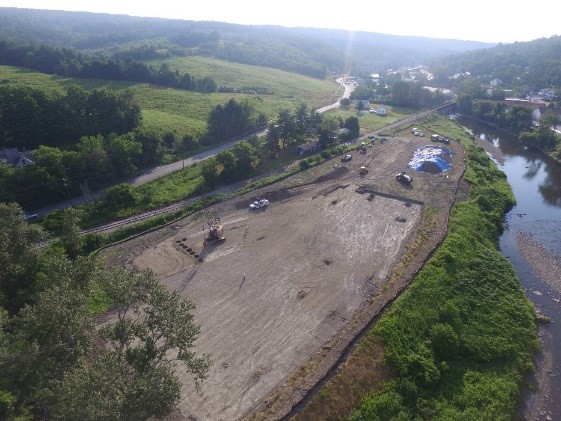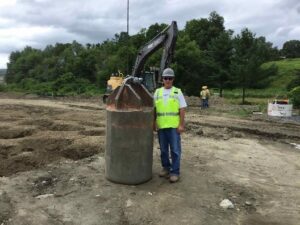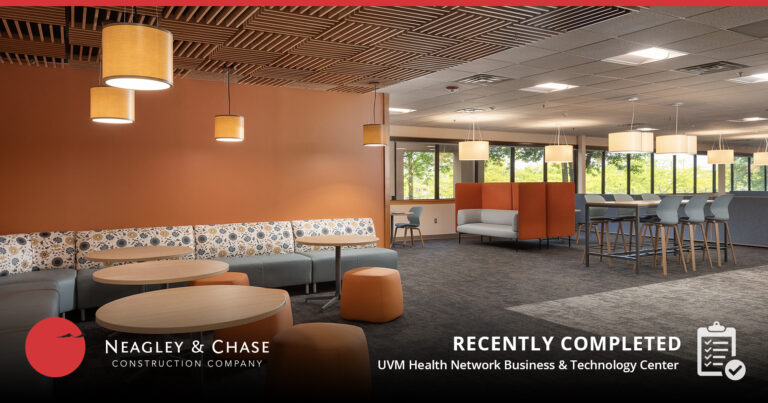
Getting to the first concrete pour earlier this month on the new Caledonia Spirits Distillery was sweeter than usual for the Neagley & Chase team.
Caledonia Spirit’s triangular building site is located on the Eastern end of the City of Montpelier, bordered on one side by the Winooski River and on the other by an active railroad bed. The three acre plot of land, which sits upstream from both retired and active granite sheds, was farmed for much of its distant past. At some point however, the site shifted from active farmland to an active fill site, totaling nearly ten vertical feet of fill over several decades.
This fill presented a challenge to the project in several ways: bearing capacity at the standard foundation depth was neither adequate or reliable, its classification as urban soils made moving the soil off-site expensive, and quietly buried 16’ below the proposed facility was a major water distribution line for the City of Montpelier. A standard approach to foundation design utilizing spread footings and frost walls proved to be an expensive and lengthy solution, so the project team got to work. Neagley & Chase Construction, and the entire Design and Consultant team, explored options to find the most cost-effective and efficient solution to building on this challenged site. Approaches considered included driven piles, helical piles, concrete spread foundations, and finally, dynamic compaction; In the end, dynamic compaction proved to be the perfect solution.
Fast forward to July of this Summer and what would commonly be referred to as a ‘ground breaking’, was a ‘ground pounding’ for the Montpelier site. For ten days the dynamic compaction crane, modified specifically for this task, hoisted and dropped an eight ton weight over the entire footprint of the new 25,000 sf distillery. A 6’ x 6’ grid had been flagged, and the crane stopped and dropped the weight at each of the grid intersections an average of five times. This effort totaled a staggering six thousand five hundred strikes, with each strike delivering a wave of soil compaction 15-20 deep.
With compaction complete, pouring concrete was still many steps away, but the success of a creative and collaborative approach to building on this challenging site has set the stage for an exciting year of construction ahead.




